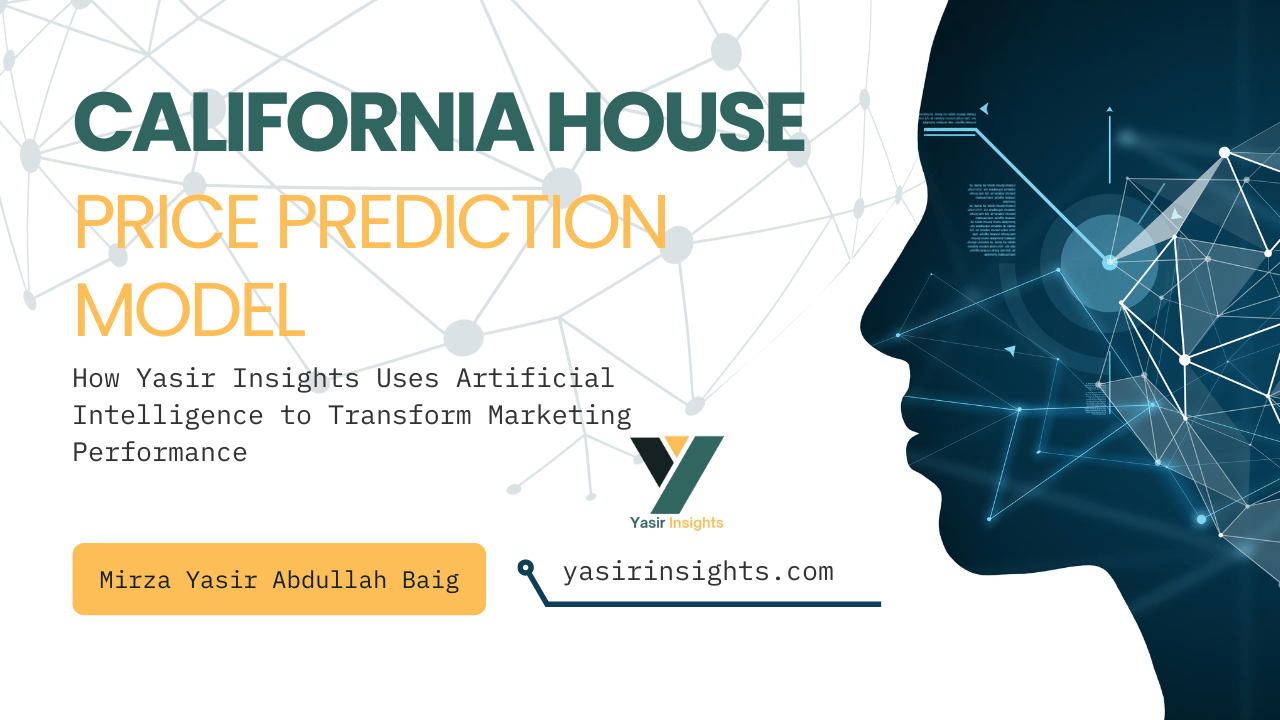
Client:
AvailableProduction:
Yasir InsightsDate:
September 27, 2023Category:
BloggingLocation:
Faisalabad, PunjabProject Details
The California House Price Prediction Model is an AI-powered web application designed to estimate median house prices across California districts using the California Housing Dataset from Scikit-learn. The project explores how machine learning can solve real-world business problems by identifying relationships between socioeconomic and geographic factors like income, house age, and population. It demonstrates a complete end-to-end ML workflow, from data preprocessing and feature scaling to model training, evaluation, and deployment using Streamlit.
The dataset was preprocessed by handling outliers, scaling numeric features using StandardScaler, and selecting key predictors such as Median Income, House Age, and Average Rooms. Several models were tested, but Linear Regression was chosen for deployment due to its interpretability, simplicity, and strong baseline performance. The model achieved an R² score of ~0.73 and low MAE and RMSE values, proving its reliability in predicting continuous price values. Trained models and scalers were saved as .pkl files for consistent and reusable deployment.
The trained model was deployed through a Streamlit web application, offering an interactive interface for both technical and non-technical users. The app allows users to input housing details such as income, age, and rooms, instantly generating predicted house prices. A clean, responsive UI displays predictions, visual insights, and an “About Me” section with portfolio links, showcasing an integrated blend of AI modeling and user-friendly design.
The model effectively captured key housing market trends — such as higher prices in high-income areas and newer houses — aligning with real-world insights. The project reinforced essential machine learning skills, including data preprocessing, regression modeling, feature scaling, and deployment. It also highlighted how AI can turn raw housing data into actionable insights for buyers, sellers, and investors. Overall, it serves as a strong demonstration of applying machine learning for real-world predictive analytics and business decision support.

The California House Price Prediction Model predicts median house values using the California Housing Dataset. It applies Linear Regression to analyze how features like income, house age, and population affect housing prices.

After preprocessing and scaling the data, the model was trained and tested, achieving an R² score of about 0.73 with low error rates. The trained model was deployed in a Streamlit web app, where users can enter inputs and instantly view predicted prices in an interactive interface.



In the strategy phase, the main objective was defined — to build a predictive model that accurately estimates median house prices using the California Housing Dataset. The focus was on identifying the most relevant features, setting clear performance goals, and selecting Linear Regression for its simplicity, transparency, and strong baseline accuracy in regression problems.
During implementation, data preprocessing was performed, including handling missing values, scaling numeric features, and splitting the dataset into training and testing sets. The Linear Regression model was then trained, fine-tuned, and integrated into a user-friendly Streamlit web app to provide real-time house price predictions based on user inputs.
The analysis phase involved evaluating the model’s performance using metrics such as R², MAE, and RMSE. Visualizations like scatter plots, residual graphs, and correlation heatmaps helped understand feature relationships and model accuracy. Insights revealed that median income was the strongest predictor of house value.
In the reporting phase, all results, visualizations, and model insights were compiled into a professional GitHub repository. The documentation included a detailed explanation of the workflow, model performance summary, and Streamlit app usage, making it easy for others to understand, replicate, or enhance the project.
